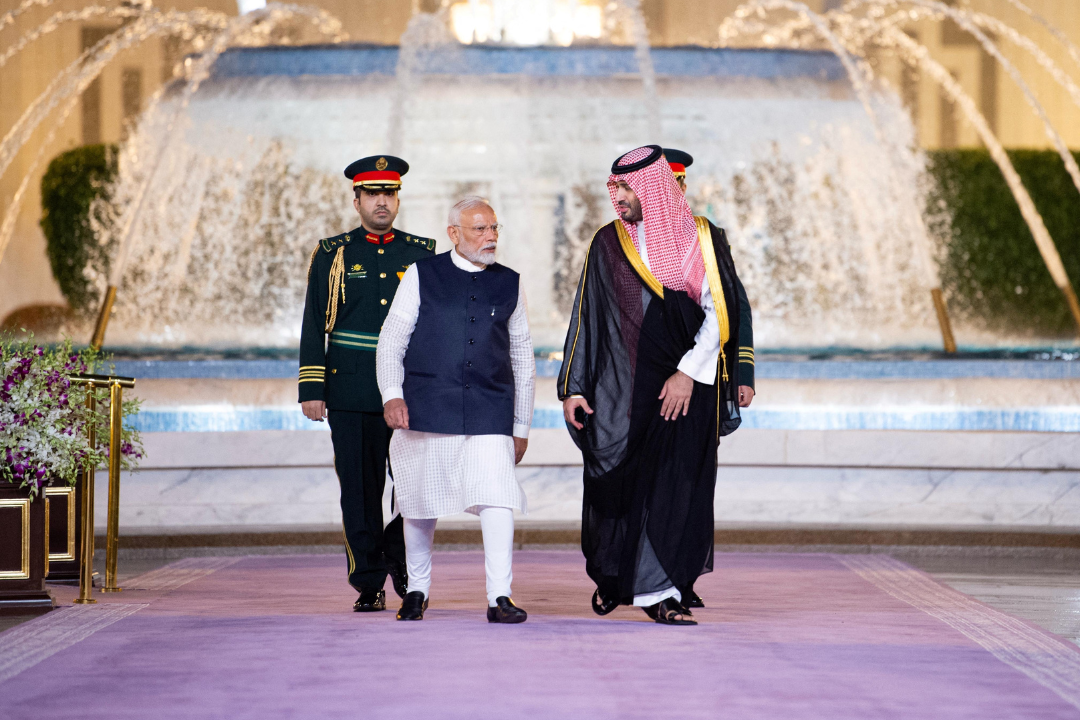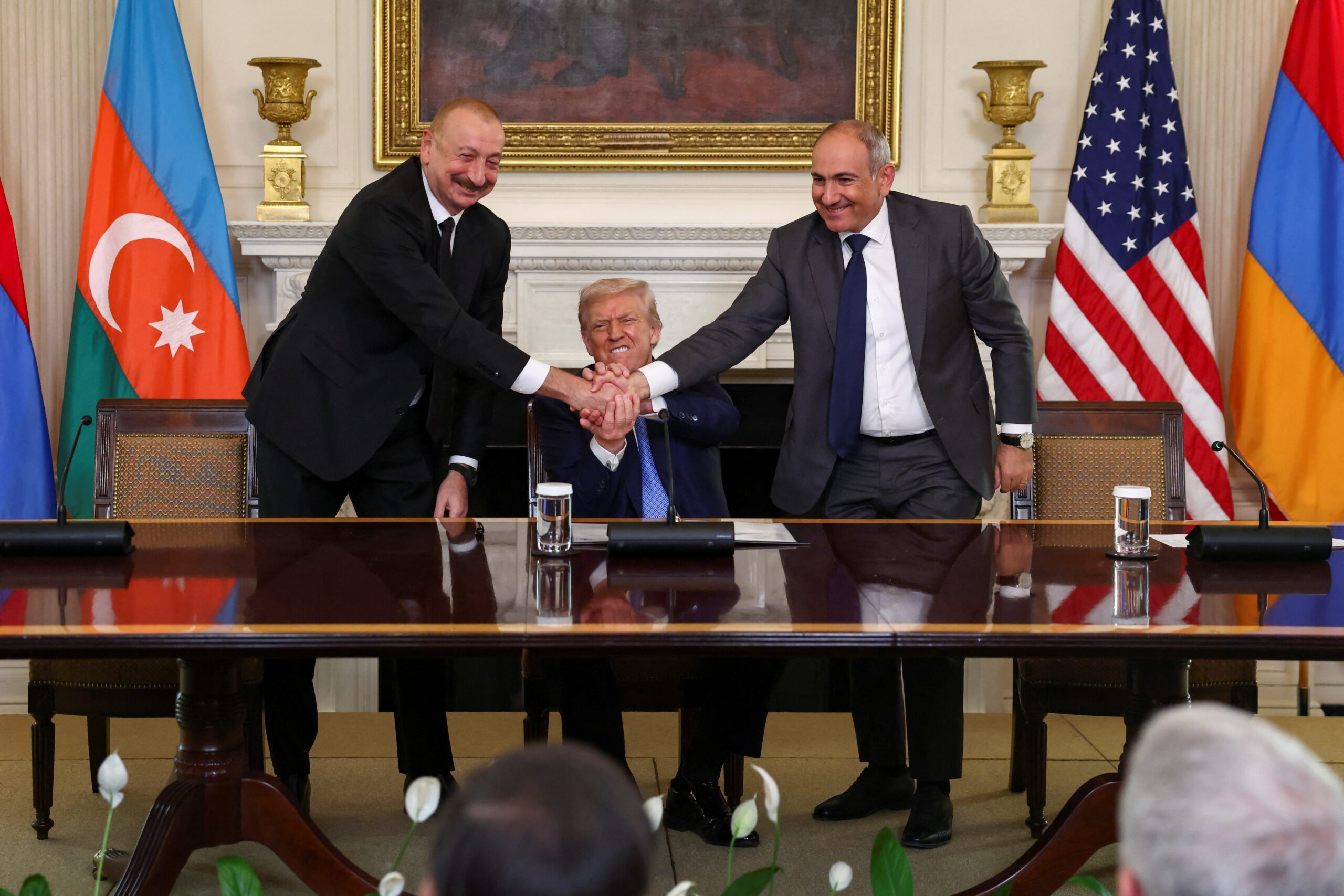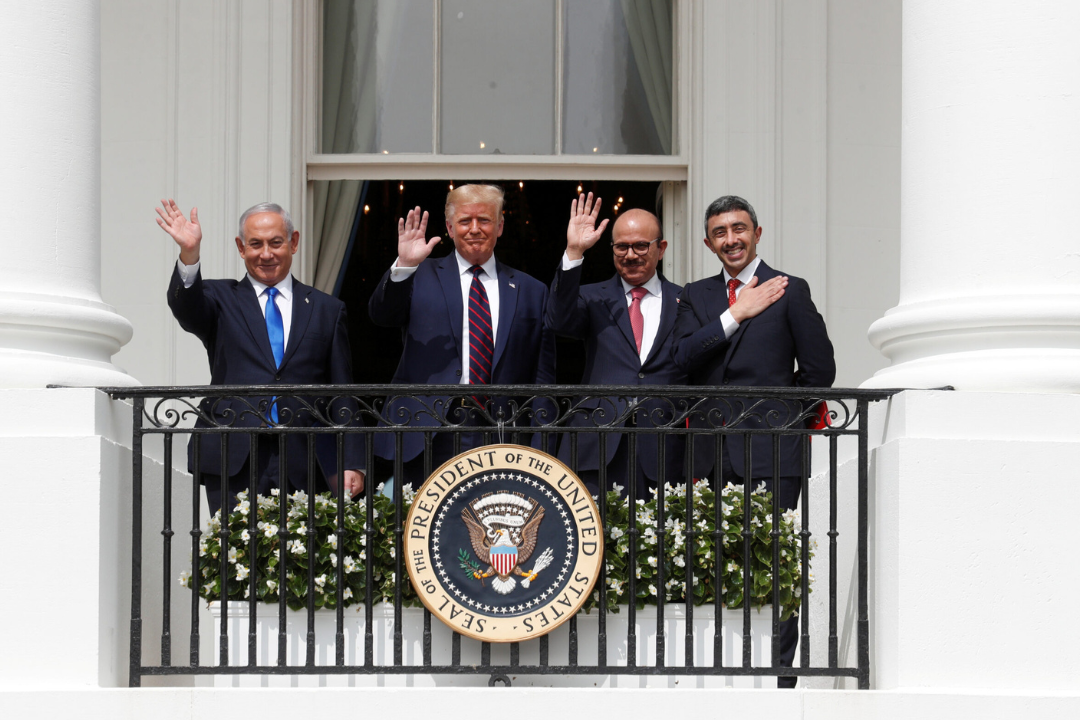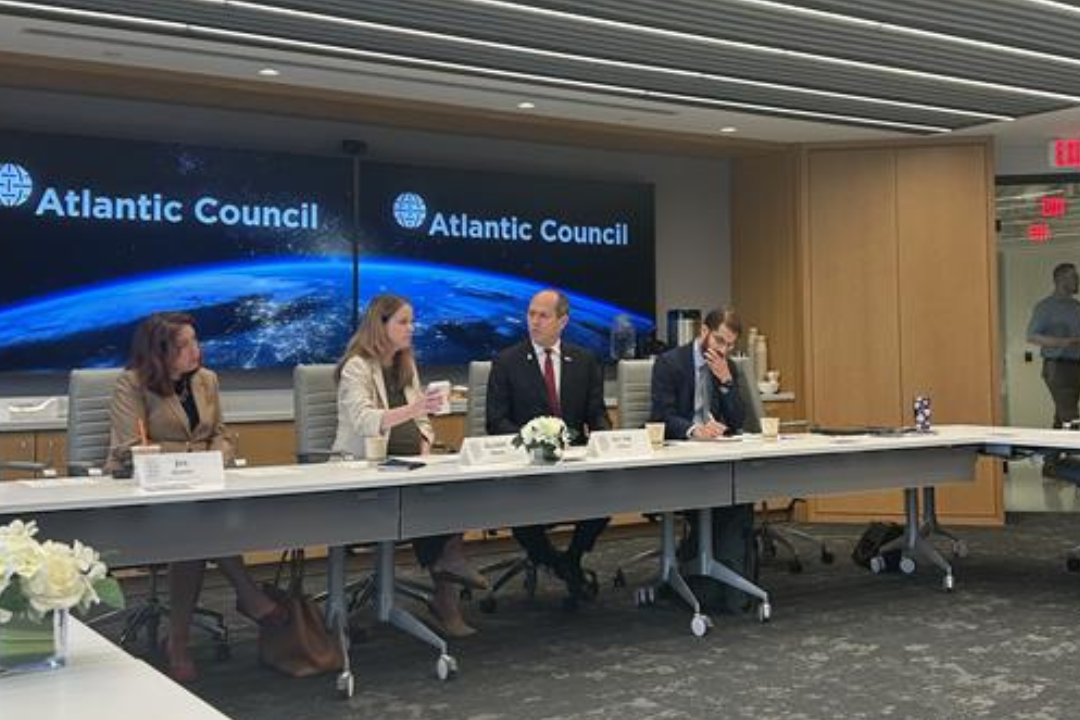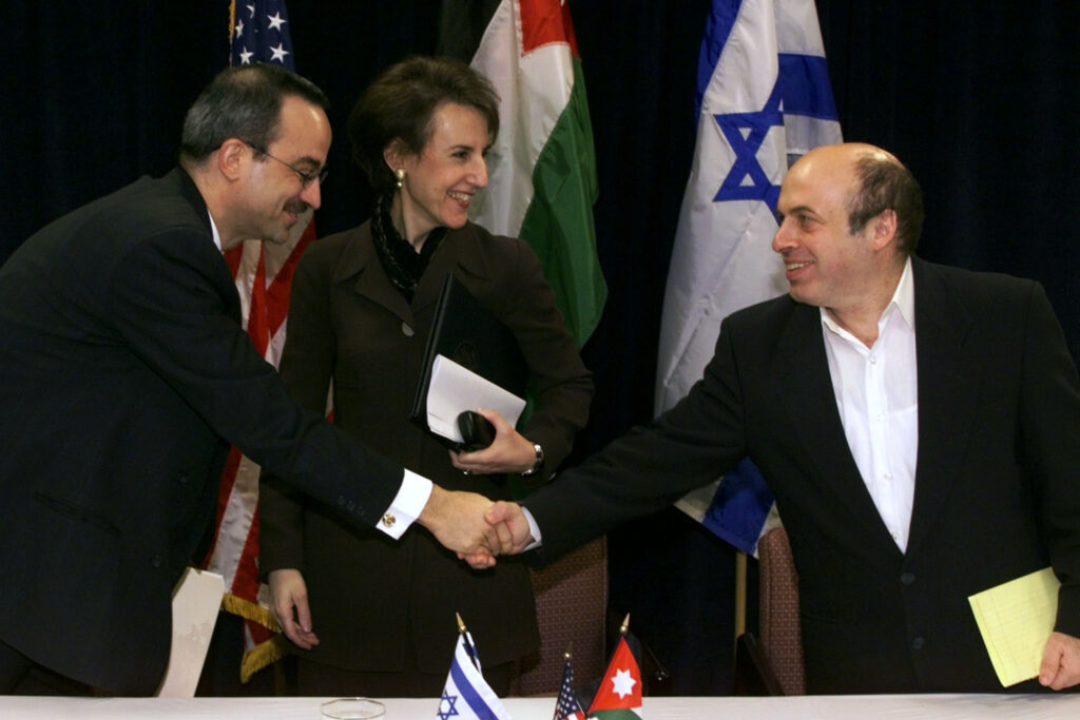By Jonathan Fulton
The day the current India-Pakistan conflict ignited, with the April 23 terrorist attack by a Pakistan-based militant group on tourists in India-administered Kashmir, Indian Prime Minister Narendra Modi was in Jeddah holding meetings with Crown Prince Mohammed bin Salman.
This was his third visit to Saudi Arabia as prime minister, and the focus was on enhancing a relationship that has grown significantly in recent years. Modi first went to the Kingdom in 2016 and then again in 2019, when the bilateral Strategic Partnership Council was established. This mechanism has been used to facilitate approximately fifty deals, including construction, telecommunications, and tech projects, and to establish a joint committee to bring one hundred billion dollars of Saudi investments into India.
With rising tensions between India and Pakistan, paired with the Israel war’s continuing destruction of Gaza, it’s natural that talk of India-Gulf Cooperation Council (GCC) relations has been muted lately. However, the depth of Indian-Gulf relations, combined with recent momentum behind these partnerships, creates a strong foundation for increased India-Middle East integration over the coming decades.
Asia–Gulf relations: Not just China
When we talk about Asia-Gulf relations, China tends to get the lion’s share of the attention. India, however, is a major Gulf actor. The non-resident Indian population in GCC countries reached nine million in 2024, accounting for 25 percent of Indian expatriates globally. There are longstanding social, cultural, religious, and family connections between the people of the Arabian Peninsula and South Asia, and this familiarity supports growing political, economic, and increasingly strategic cooperation.
In contrast, China remains an important partner but one with fewer tangible cultural ties. It is perceived as a more transactional actor, whereas India is deeply enmeshed in the social fabric of the Gulf.
The importance of these people-to-people connections gets augmented by the substantial economic relations. India’s GDP hit 3.56 trillion dollars in 2023, up from 2.68 trillion dollars in 2020, and is expected to grow by 6.5 percent in 2024. As a result, it consumes a lot more energy, and it is now the world’s third-largest consumer of oil, behind China and the United States. The Gulf countries, naturally, play a significant role in India’s energy security. Of the top five commodities exporters to India, the UAE is number one, Saudi Arabia is number two, and Iraq is number four. The volume of trade is significant. In 2023, India imported just under 103 billion dollars from the GCC, Iran, and Iraq, and exported 57 billion dollars, making it one of the most important trade partners for the Gulf.
India’s footprint on the Arabian Peninsula
Lesser noticed are the growing strategic relations and the formalized development of bilateral mechanisms. New Delhi and Riyadh signed a 2014 defense cooperation agreement, which allowed for “shared use and exchange of defense-related information, military training and education, as well as cooperation in areas varying from hydrography and security to logistics.” Since then, there have been regular joint army, naval, and air force joint exercises, and a Joint Committee on Defence Cooperation has held six rounds of meetings. On April 23-24, the Indian Army and Royal Saudi Land Forces held the first round of Army-to-Army Staff Talks to discuss strengthening defence ties.
Oman has even denser security ties to India, signing a military protocol agreement in 1972 and a Memorandum of Understanding on defence cooperation in 2005. During a 2018 visit to Muscat, Modi signed an access agreement for the Indian Navy to use Duqm port for logistics, support, and maintenance.
The UAE is also ramping up defense and security relations with India. During an official visit to India last month, Minister of Defence Sheikh Hamdan bin Mohammed Al Maktoum built upon existing security-related mechanisms to formalize cooperation between their coast guards and defence industries. The readout from their meeting stated that “the two sides agreed that defence cooperation should be scaled up to match the progress in trade and business.”
This is part of what is really India’s most highly developed Middle East relationship. With dramatic effects, it signed a Comprehensive Economic Partnership Agreement with the UAE in 2022. Bilateral trade in goods was 43.3 billion dollars in 2020 and is projected to surpass one hundred billion dollars this year. The Emirates see India as an important feature of their drive to diversify international partnerships and their domestic economy. Cooperation with India supports tech, skilled, and unskilled manpower, food, and medicine.
Importantly, cooperation comes without the same kinds of geopolitical complications inherent in working with China. According to an observer I recently spoke with, the only impediment to deeper India-UAE ties is the institutional capacity to keep pace with the demand for implementing and overseeing the wide range of projects that both sides want to pursue—the two governments need to develop more personnel to steer the bilateral relationship.
This is to say that India is present in the Gulf with a depth and breadth that is not always realized from outside the region. India is becoming more confident in its role as a global actor with interests and influence beyond South Asia, and regional perceptions are shifting, with Gulf countries looking at New Delhi as a consequential partner on a growing set of issues.
The IMEC factor
The India-Middle East-Europe Economic Corridor (IMEC) is perhaps the most interesting manifestation of this burgeoning regional partnership.
Announced during the G20 summit in September 2023, IMEC is a proposed set of projects that would link India, the Arabian Peninsula, Israel, and Europe. China’s Belt and Road Initiative (BRI) was defined early as a set of corridors, so naturally, many see IMEC as a response to the BRI. It does share the underlying logic of connecting markets and supply chains, but has a narrower focus. Fairly or unfairly, BRI quickly became a buzzword for nearly everything in Chinese foreign policy. IMEC, on the other hand, looks to build upon mostly existing physical infrastructure to develop three “connectivity verticals”: transport, digital, and energy. The Arabian Peninsula is a central node in this, linking the Arabian Sea via rail networks to Israel’s Haifa Port on the Mediterranean, ultimately reaching the European market.
Within the GCC, this is a very attractive idea that aligns with country-specific “Vision” development plans. One of the most alluring futures that Gulf leaders plan for is a post-hydrocarbon economic model where new industries, fueled by foreign direct investment and partnerships with leading global technology companies, create jobs and political stability. IMEC is seen as an ambitious set of projects that can contribute to this.
While IMEC has strong support from India and most Gulf governments, progress on some elements of the corridor could face challenges in the immediate term, given tensions in the Middle East, particularly transport links between Saudi Arabia and Israel. When IMEC was unveiled, the idea of Saudi Arabia connecting to Haifa via Jordan was increasingly plausible. After nineteen months of brutal war in Gaza, the political costs have risen significantly for Riyadh. Government and business leaders see tremendous potential in IMEC connectivity, but are intensely aware that public perceptions of Israel have hardened throughout the war. Still, other transport, digital, and energy elements of IMEC are viable in the current environment and continue to enjoy strong support from Indian, Gulf, and European partners. Beyond IMEC, we can expect to see more projects that address bilateral concerns, like energy and food security or tech cooperation, as Gulf countries find ways to increase engagement with India.
Opportunities for the United States
With GCC-US relations at a high point following President Donald Trump’s visit to Saudi, Qatar, and the UAE, growing momentum in GCC-India relations is in Washington’s interests as well. An Indo-Pacific partner with a deep presence in the Gulf makes a more competitive environment for China, while supporting GCC efforts to build more dynamic and sustainable economies.
With overlapping interests in energy security, maritime stability, and economic diversification, the US, India, and GCC should consider institutionalizing cooperation, such as a multilateral platform to enhance policy coordination, increase trust, and create a channel for project planning and strategic alignment.
Jonathan Fulton is a nonresident senior fellow for Atlantic Council’s Middle East Programs and the Scowcroft Middle East Security Initiative and an associate professor of political science at Zayed University in Abu Dhabi.

